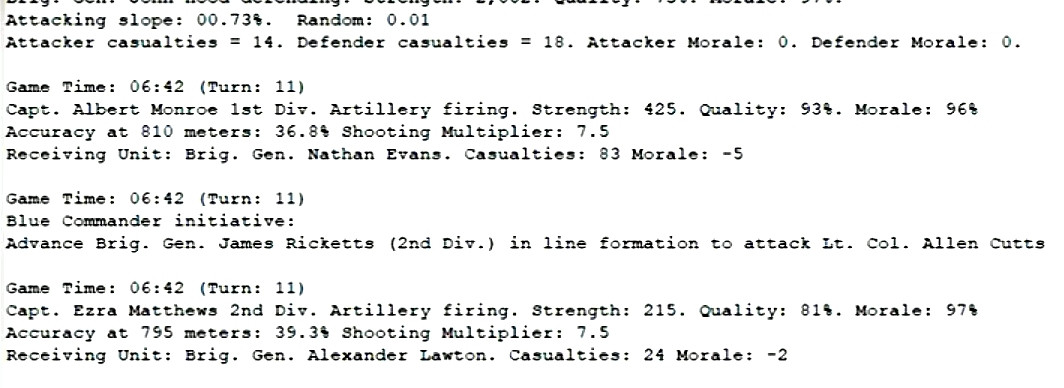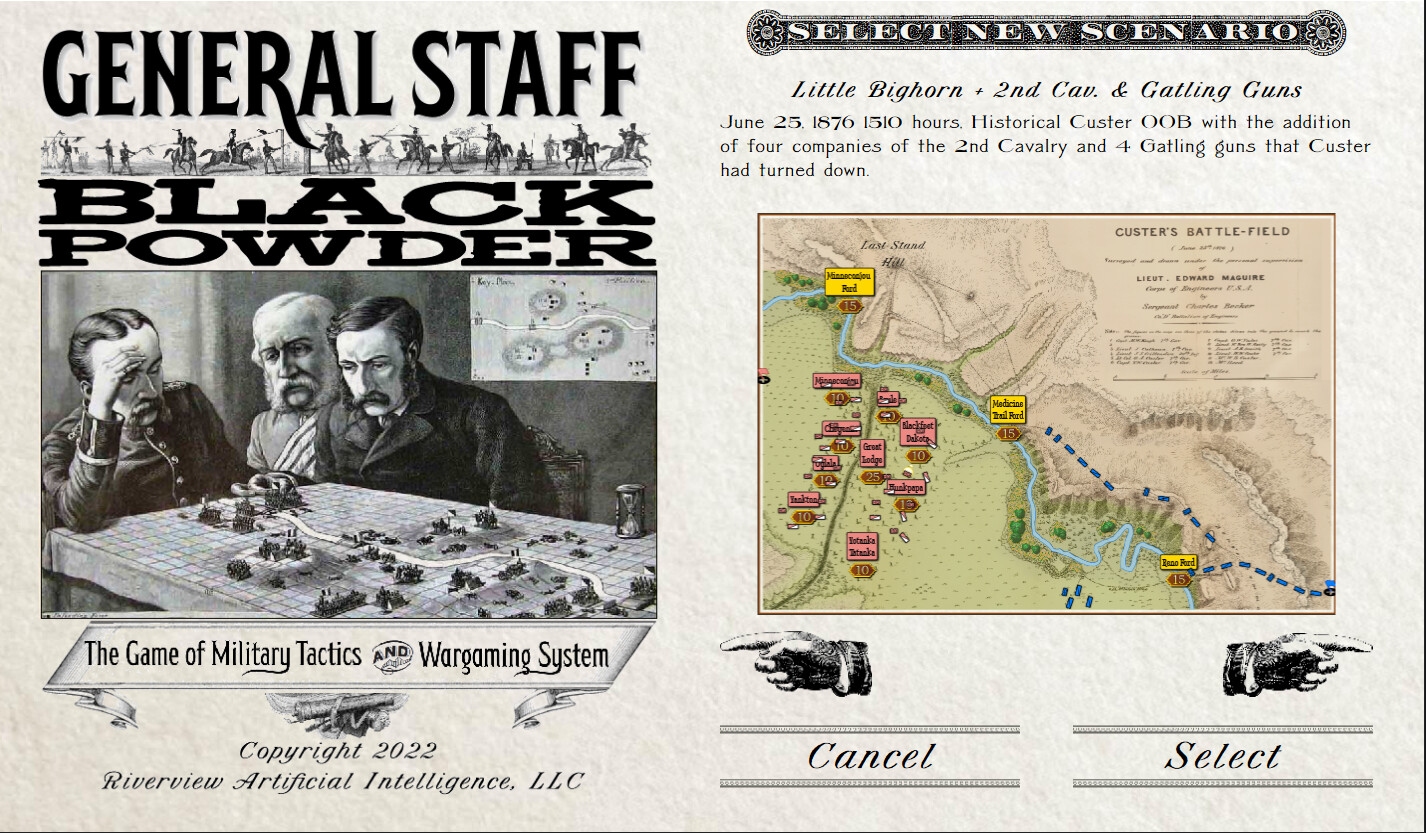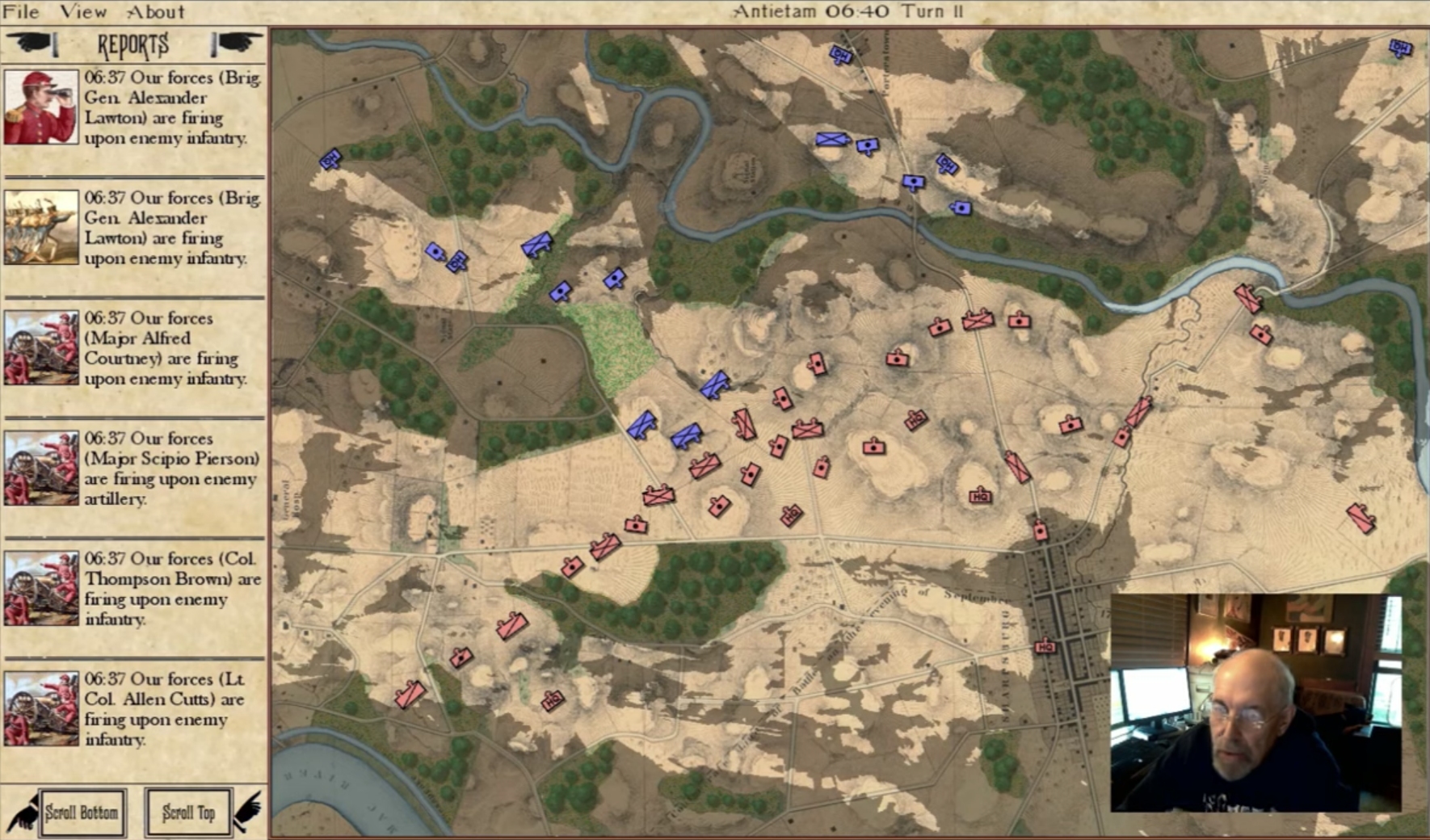Ezra Sidran’s latest General Staff: Black Powder video lets us read the thoughts of the game’s silicon McClellan as he prepares to do battle outside Sharpsburg, Maryland on September 17, 1862. Impressively, none of Little Mac’s thoughts are prefabricated. They are the dynamic products of battlefield analysis, military science, and an RPG-style ‘leadership’ variable.
As the above video illustrates, although GSBP’s McClellan has – right now – a pretty mediocre Leadership rating, it doesn’t prevent him from realising that a flank attack is a waste of time (the Confederates have anchored flanks) and noticing that neither side has the advantage of interior lines. He knows he’s going to have to bludgeon holes in enemy lines and in order to do this he must gain control of several of the map’s key choke points. We see him issuing appropriate orders to his corps, then, once those orders have been distributed by courier, witness these corps attempting to execute his plan.

Of course, the dev is aware that most battle plans undergo modification during implementation. The combat log for Turn 11 reveals that Ricketts – one of McClellan’s more resourceful and capable subordinates – isn’t following his orders to the letter in the vicinity of Bloody Lane.

It would have been wonderful if the video had ended with a hard launch date rather than an announcement from Ezra that he is switching his attention to Steam install scripts in preparation for the release of the game’s scenario, army, and map editors to early backers, but you can’t have everything, can you. Like Burden of Command, another incorrigible dawdler, this potential mastepiece will be done when it’s done and not a moment before.


Been looking forward to this for a long time. I hope I am around when it is finally released.
While every report on this AI development sounds and looks very impressive, I think that I, as many other people are, am unable to appreciate it fully because we lack public knowledge on how other wargames’ AIs handle their tasks. We can often say that an AI is bad or good, sometimes we can discern some patterns in their behaviour, but all in all we rarely see developers explaining how our synthetic opponents weight their options.
So, while it is very illuminating to see one such AI dissected and thoroughly explained, I still do my best to be reserved in my emotional investment. There is not enough info to compare it to anything already existing. I would also really love to see not only what it does well, but also the things that completely stump this AI. Without comparisons and bad examples it is really difficult to form reasonable expectations.
But, damn, of course I hope it will be the best thing ever and I will keep watching it closely, despite it being in development for a godd while, as I understand!